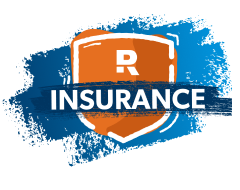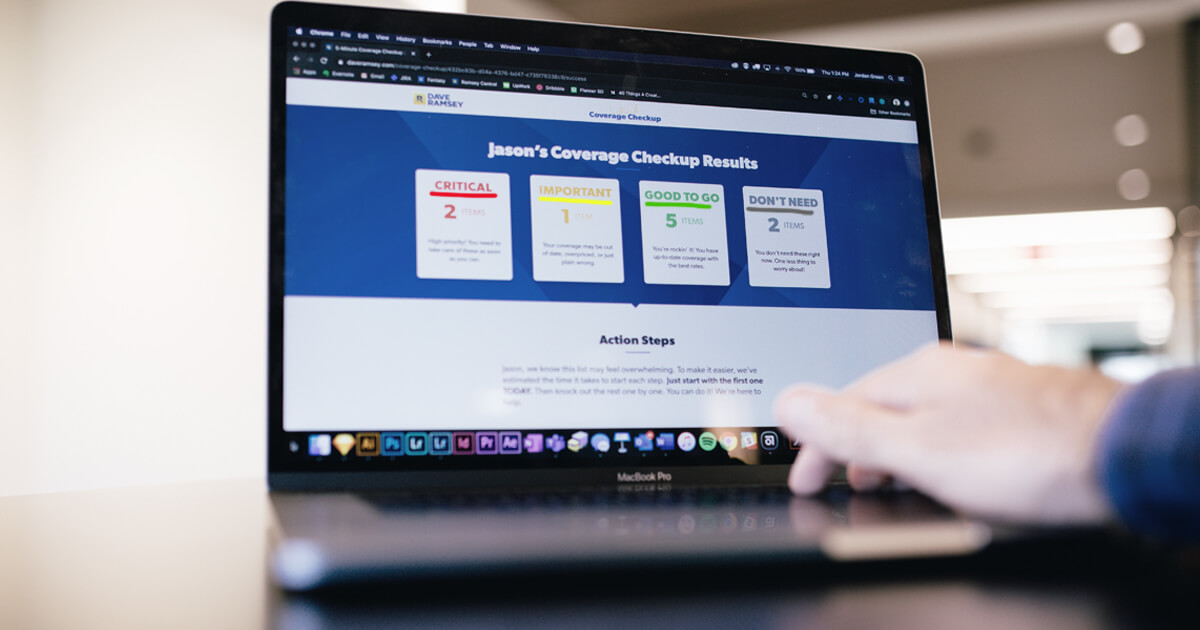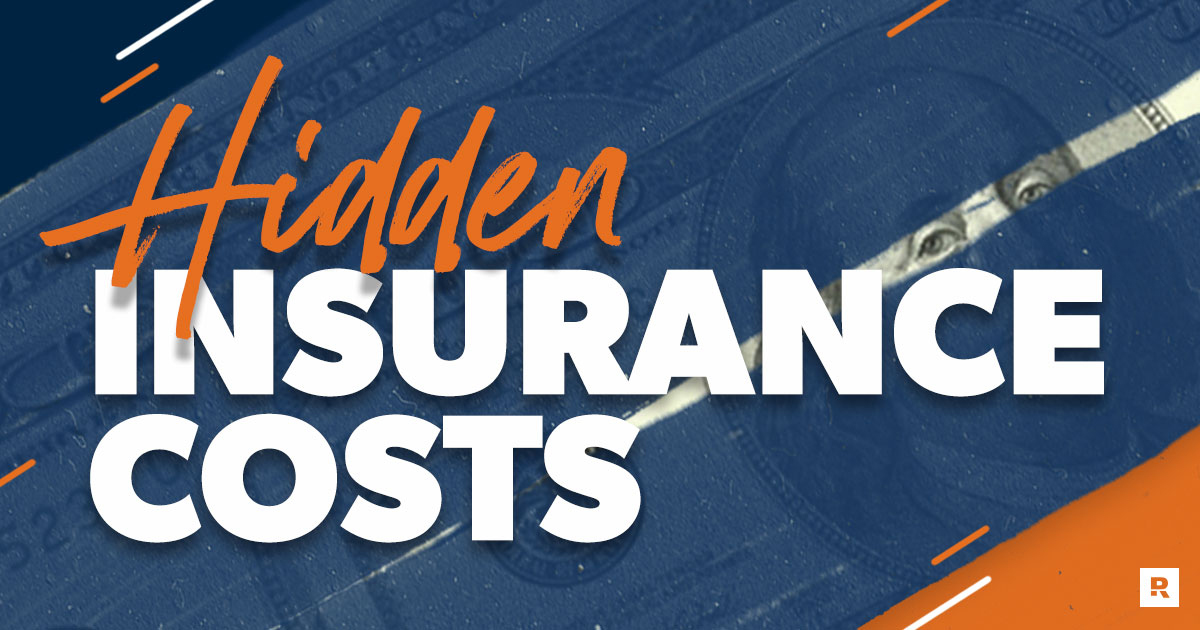

When you’re buying insurance, there’s a lot of jargon to wrap your head around. But one basic insurance term worth knowing about is deductible.
So . . . what is a deductible, and why is it important to know how to use one? And how do deductibles work across your home, auto and health insurance plans?
We’ll walk you through all you need to know about insurance deductibles and how to make the most of them!
If you’re considering an insurance policy, a deductible is the amount you’re responsible for in a claim when and if you make one. The insurance company will deduct that figure from the total amount of the insurance claim being paid out.
The higher your deductible, the less you’ll pay in premiums for the insurance itself. (Premiums are what you pay every month or year to have the insurance coverage in the first place.)
The higher your deductible, the less you’ll pay in premiums for the insurance itself.
That’s because you’re taking on more of the financial responsibility if you need to make a claim. And the insurance company is not paying out as much, which means they can afford to charge you less in monthly premiums.
When you’re buying insurance, whether it’s for your car or your home, you’ll see your deductible amount in the declaration summary of your policy document.
A deductible basically works like this: Let’s say you have a $500 deductible on your car insurance. You get into a minor scrape and need to make a claim with your insurance company.
The company approves your claim, which is for $2,000 worth of repairs. It’s your responsibility to pay $500 toward repairs because that’s your policy’s deductible. The insurance company will cover the rest—in this case, $1,500. Sounds simple, right?
There are two types of deductibles when you buy an insurance policy: a set amount and a percentage amount.
This deductible is a set amount of money, like the example we talked about above. You’ll know these set deductibles and exactly what dollar amount you’ll be responsible for in a claim situation when you buy the insurance. Most policies set minimum deductibles (more on these later). But it’s also possible to raise your deductible afterward in order to have lower premiums.
Percentage deductibles normally apply to a building’s insurance to cover structural damage after unpredictable events like an earthquake, wind damage or hail damage. The percentage deductible is based on the value of the total insured amount.
Percentage deductibles can range from 1% to 5%. 1
Property insured for
Percentage deductible for this policy
In a claim for $20,000,
insurance will pay out
$200,000
2% of insured amount = ($4,000)
$16,000
Health insurance is a little different from other insurance types when it comes to deductibles. Along with a set dollar deductible, there are other out-of-pocket costs like copays and coinsurance you may have to cover in addition to the deductible.
Let’s take a look at these now!
Let’s face it: Health insurance is expensive to buy, and bills can skyrocket for unexpected medical treatment. On average you’re paying a few hundred dollars every month on an individual health insurance premium! 2
First, the actual deductible part works the same way—in your health insurance policy, the deductible is the amount you’re responsible for paying before the insurance provider begins to share some of the cost with you.
In your health insurance policy, the deductible is the amount you’re responsible for paying before the insurance provider begins to share some of the cost with you.
So let’s say your health insurance plan has an annual $1,000 deductible. If you needed some medical treatment and the bills started coming in, you would have to pay for the first $1,000 in medical costs.
![]()
Do you have the right insurance coverage? You could be saving hundreds! Connect with an insurance pro today!
But after that the cost would be less to you because your health insurance coverage kicks in to help cover some of the remaining cost.
And it’s good to remember that most health insurance plans cover routine check ups and preventative tests as standard. Deductibles mainly apply when you need further treatment or hospital care. It’s always important to check your plan for more detail on your deductible.
Once you’ve reached your deductible with your health insurance, coinsurance steps in. Coinsurance means you are still paying a share of the health care you’re receiving after you’ve paid your deductible.
The amount you pay in coinsurance is a percentage of the bill sent to your health insurance provider. How much this percentage is all depends on the plan you’ve chosen.
Let’s pretend your deductible is $2,000. Once you’ve met your deductible, any medical bills you receive will have a coinsurance percentage you’ll have to pay. So if your coinsurance responsibility is 30%, that means your health insurance provider will pay 70% of each future bill. 3
A copay is separate from a deductible. You pay paid it each time you visit your doctor or receive a health care service. It’s a fixed amount, set by your particular health insurance plan. The copay can change depending on the health care service you’re using (for example, a copay for a physical therapy session might be higher than a copay to your doctor for a check-up.)
A minimum deductible is the minimum amount you’re expected to pay in deductibles for a particular insurance policy. This minimum deductible is set by the insurance company based on the rules of the state they’re doing business in.
As you’re shopping for insurance, the insurer will state their minimum deductible. You won’t be able to go below that amount but may be able to adjust the deductible higher if you want a lower premium. Insurers vary, but as a rough guide, renters and home insurance minimum deductibles are around $500. Auto insurance minimums are around $200.
The reason insurance companies set a minimum deductible is so they don’t have to take on the financial cost of the whole claim. You’d have to shop around for a long time to find an insurance policy with a zero dollar deductible.
Now for the good news! Overall, a great way to save money on your insurance premiums is by raising your deductible amount. This means you’re taking on more of the cost of a potential insurance claim, but it also means you’re paying less in those monthly or annual premiums.
A great way to save money on your insurance premiums is by raising your deductible amount.
Of course you’d have to make sure you can cover the deductible cost in your emergency fund. But if you have a few years without making any home or auto insurance claims, why not spend less on the actual cost of insurance if you can?
By raising your deductibles and saving on premiums, you can put more money into your savings and investment accounts. Use these savings when you do have to make a claim.
Take the coverage checkup to find out what insurance coverage you should add, tweak, or drop based on your individual needs.
If you’re searching for home, auto, health or any other type of insurance, then you need an independent insurance agent to help you.
Use our Endorsed Local Providers (ELP) service to find a professional, highly rated insurance agent near you. These experts can then guide you through finding the insurance policy you need (with the best deductible!), saving you money at the same time.

When you work with a RamseyTrusted pro, you can feel confident knowing they’re going to find the best policy for you at the best price.
About the author
Ramsey Solutions has been committed to helping people regain control of their money, build wealth, grow their leadership skills, and enhance their lives through personal development since 1992. Millions of people have used our financial advice through 22 books (including 12 national bestsellers) published by Ramsey Press, as well as two syndicated radio shows and 10 podcasts, which have over 17 million weekly listeners. Learn More.

May I introduce your new best friend: insurance, here to reduce risk. In this introduction to insurance, I’ll help you guys get to know each other so you can take your relationship to the next level.
George Kamel

Save hundreds of dollars with this simple tip!
Ramsey Solutions

Hidden insurance costs can really add up. But you could save plenty by avoiding these bogus insurance fees. Hey, every little bit helps, right?
Ramsey Solutions
To give you the best online experience, Ramsey Solutions uses cookies and other tracking technologies to collect information about you and your website experience, and shares it with our analytics and advertising partners as described in our Privacy Policy. By continuing to browse or by closing out of this message, you indicate your agreement.